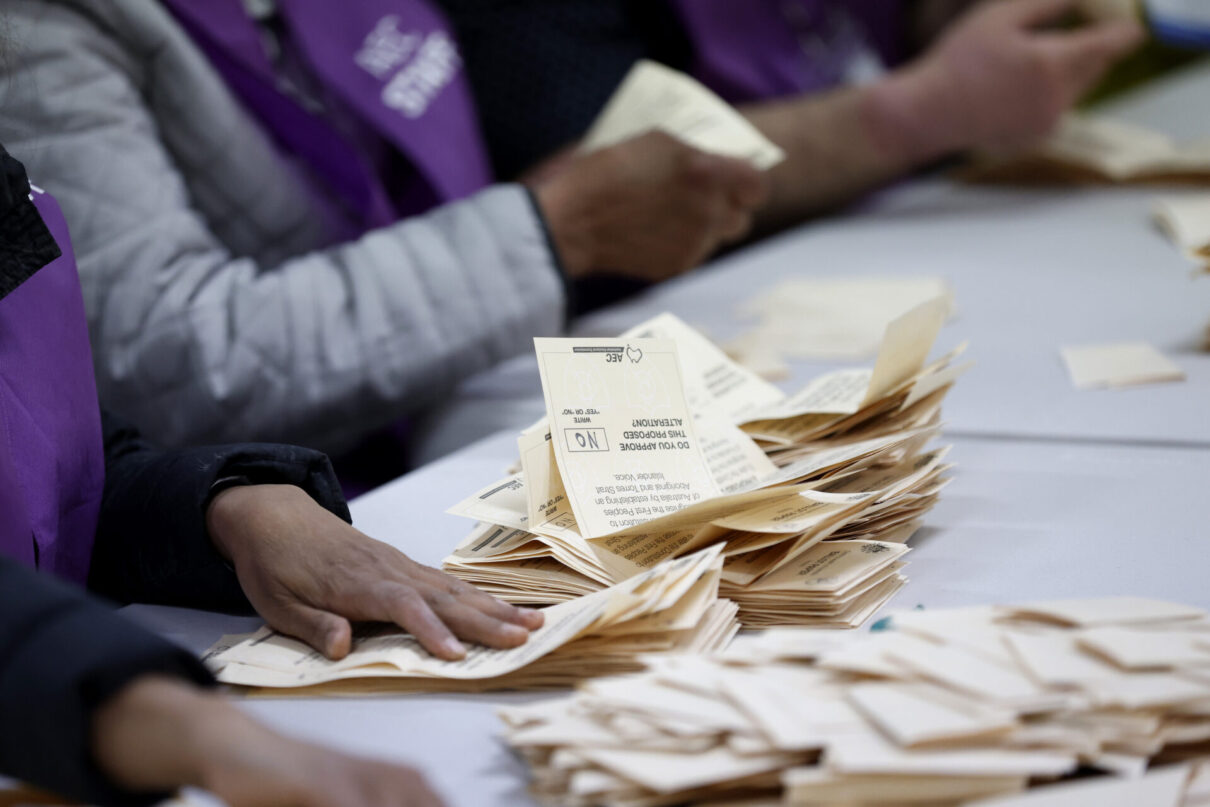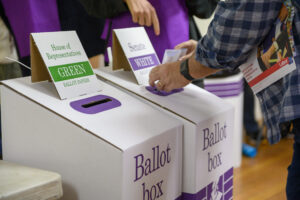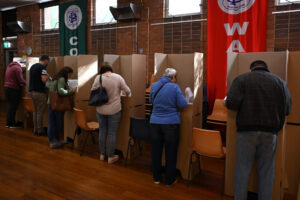Full preferential voting means you can’t waste your vote

Full preferential voting is a proud Coalition reform – one that benefits every political persuasion
Compulsory voting and full preferential voting make up the backbone of Australian democracy, and protect us from voter suppression and disengagement seen in other countries. We owe both to the parties of the centre-right, what would become the Liberal–National Coalition.
Compulsory voting ensures that most Australians participate in elections. It removes the incentive for nasty campaigns to demoralise people so they do not bother to vote at all and deliberate maladministration to make voting so unpleasant for targeted groups that turnout is suppressed.
Both deliberate voter suppression and poor voter turnout are seen in countries without compulsory voting.
The reform was introduced federally in 1924 via a private member’s bill from the Nationalist Party reformer HJM Payne, nine years after a conservative government adopted it in Queensland. In the 1922 election, voter turnout was just under 60%; In 1925 – the first under compulsory voting – it rose to over 90%.
Why full preferential voting ensures your vote can’t be ‘wasted’
As for preferential voting, its great benefit is that it ensures that Australians cannot “waste” their vote. Under full preferential voting, Australians number every candidate according to their preference.
The full distribution of preferences confirms that between the last two candidates remaining, the majority prefer the ultimate winner. An elected representative can be confident that they are preferred by the majority over the runner up – even if they started with a lower primary vote.
New South Wales is the one state that uses optional preferential voting instead of full preferential voting. Voters must give their first preference to a candidate but may then stop numbering. Most stop after a single vote, meaning that many voters forfeit their right to influence the final election result.
The switch from full preferential to optional was made in the 1980s in an attempt by the Labor Government at the time to hobble the conservative parties – who have historically depended on preferential voting to win elections.
Some history
In the 1910s, conservative liberal parties and country parties were eating each other’s lunch. Under “first past the post”, conservative voters were splitting the vote between Liberal (or several variations thereof) and Country candidates. Labor candidates were winning even in electorates where the majority of voters clearly preferred a non-Labor member.
On its election in 1917, the Nationalist Party (precursor to the modern Liberal Party) wasted no time in bringing in full preferential voting, and immediately felt its benefit. In the 1918 by-election for Corangamite, the Labor candidate won 43% of the primary vote while four conservative parties split the vote: 26%, 23%, 5% and 4%. The vast majority of conservative voters preferred the Victorian Farmers candidate over Labor, and their preferences propelled him to a comfortable 56%–44% win.
Historically, full preferential voting benefited the Coalition. Data from Antony Green shows that between 1949 and 2010, Coalition candidates won 125 seats from behind thanks to preferences – more than double the 53 Labor candidates who did the same and far more than the 6 independent/other candidates in the same position.
Since 1998, Labor has won more seats from behind thanks to preferences than the Coalition, and in 2022 more independent/minor party candidates won from behind than either Labor or Coalition candidates.
Overall, since the modern Liberal Party’s first election in 1946 the Coalition won 128 seats from behind, Labor 97 and crossbenchers 23.
The most audacious seat win – where a candidate from the lowest primary vote ended up winning the seat – was Country candidate Arthur Hewson in McMillan in 1972. He won from third place with just 17% of the primary vote to Labor’s 46%. He won because he was ultimately preferred by 52% of voters to Labor’s 48%.
Such victories are rarer under optional preferential voting because more voters stop numbering after identifying a single preference. However, they still happen. In the NSW state seat of Murrumbidgee in 1984, National Adrian Cruickshank started in third place on 25% of the vote but leapfrogged an independent and the Labor candidate to finish with 52%.
Full preferential voting made the Coalition feasible across Australia – because it allowed Liberal and Country/National candidates to run against each other without sabotaging the Coalition’s overall prospects. One of the great losses from optional preferential voting in New South Wales is that Liberal and National candidates are reluctant to run against one another, limiting the choices for regional conservative voters. Cases like Adrian Cruickshank’s are getting less common as the Coalition parties fear voters will stop after numbering one candidate.
Is preferential voting at risk?
Unfortunately, some conservatives now see independent and minor party candidates winning on preferences and are tempted to abandon full preferential voting, or even preferential voting at all.
Short-term political advantage is a poor guide for reform. Just as NSW Labor came to regret dropping full preferential voting in that state, there is every chance that abandoning one of the Coalition’s signature contributions to Australian democracy would hurt the Coalition just as much as it does Australian voters.
Australians can be thankful to the Liberal Party for preferential voting, but the Liberals should be thankful to preferential voting too.
Data sources
Australian Electoral Commission (2022) Tally room archive
Bonham (2019) 2019 House of reps figures finalised
Green (2010) Preferential Voting in Australia
Green (2013) Preference Flows at the 2013 Federal Election
Green (2016) Preference Flows at the 2016 Federal Election
Green (2019) Preference Flows at the 2019 Federal Election
Green (2022) 2022 Post-Federal Election Pendulum
Between the Lines Newsletter
The biggest stories and the best analysis from the team at the Australia Institute, delivered to your inbox every fortnight.
You might also like
The rise of early voting in Australian elections
Are voters missing out on more than their democracy sausage?
Australians should be proud of our preferential voting, but there is an alternative
A record number of Australians voted for independents and minor parties at the most recent federal election election.
Election entrée: Early voting in Australia
A cornerstone of the Australian election experience is tucking into a democracy sausage after casting your ballot on election day.


